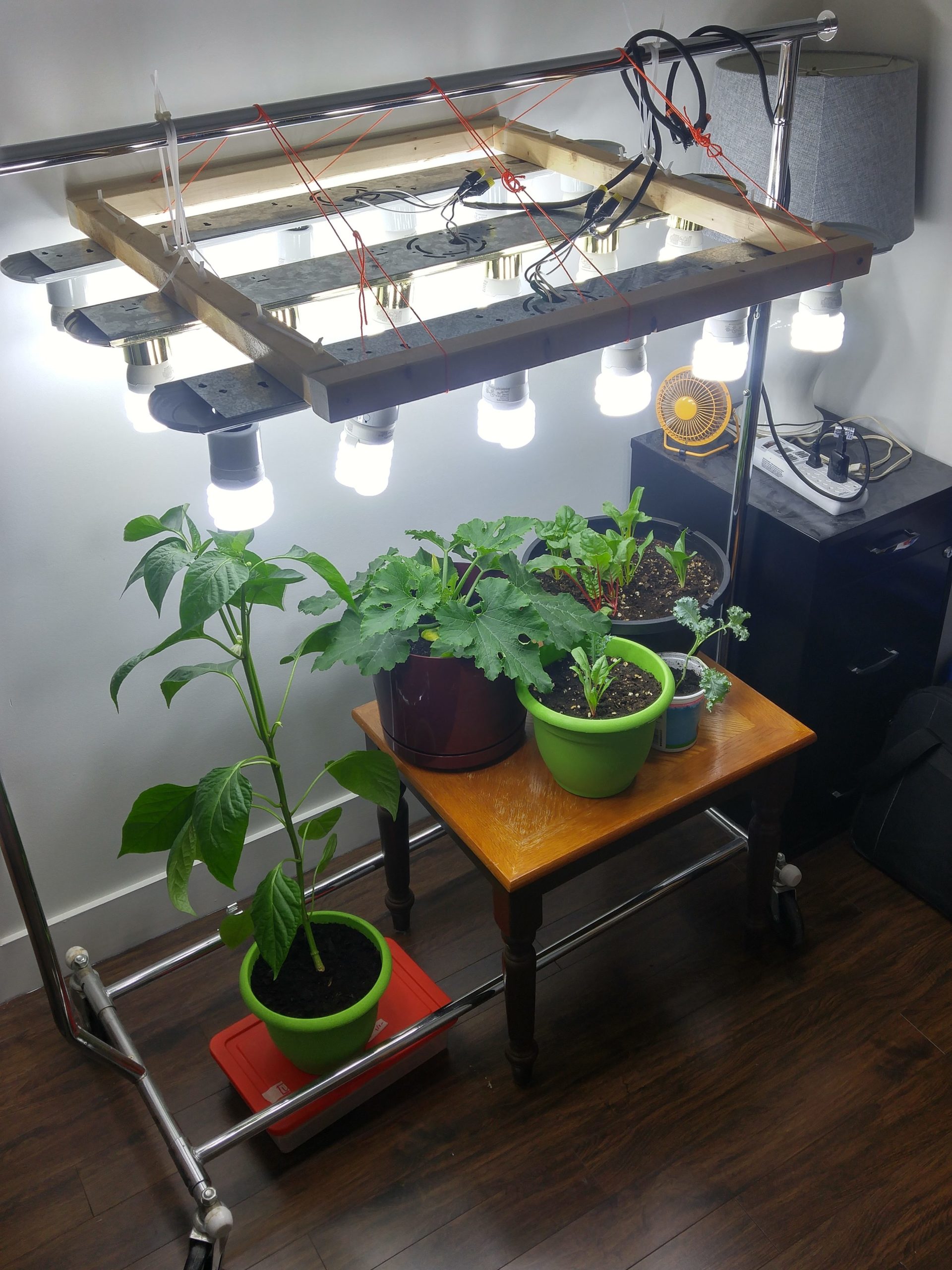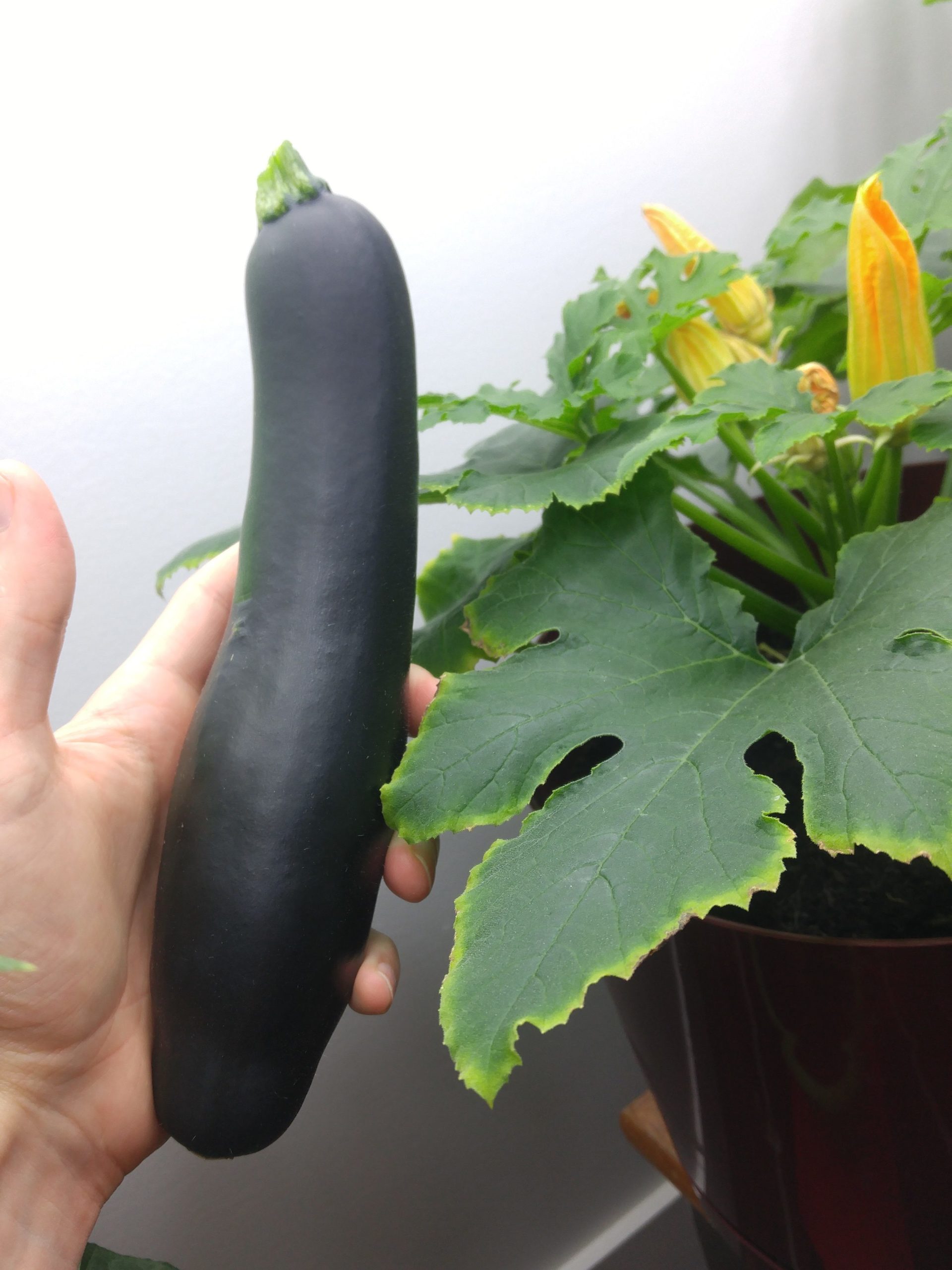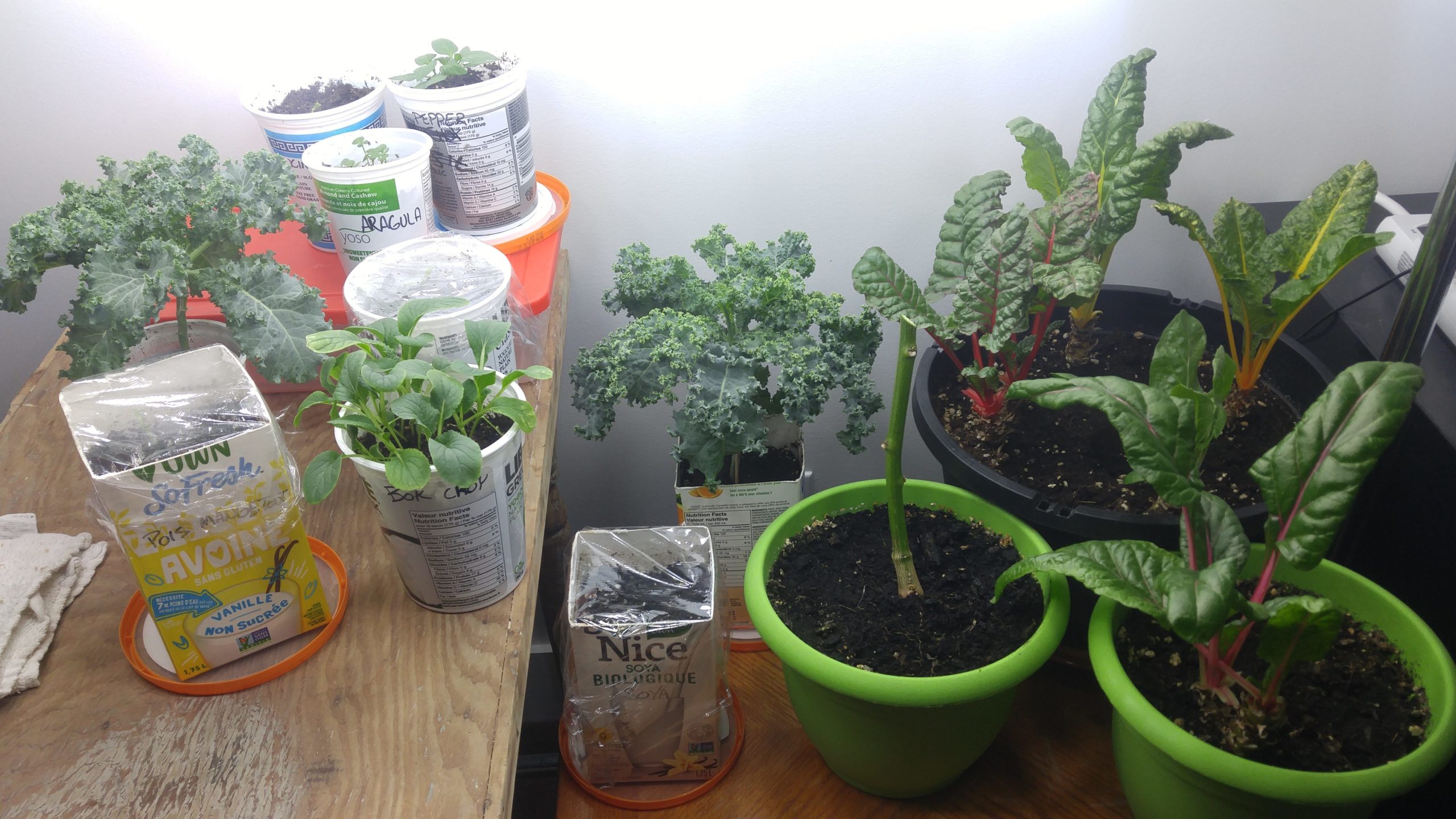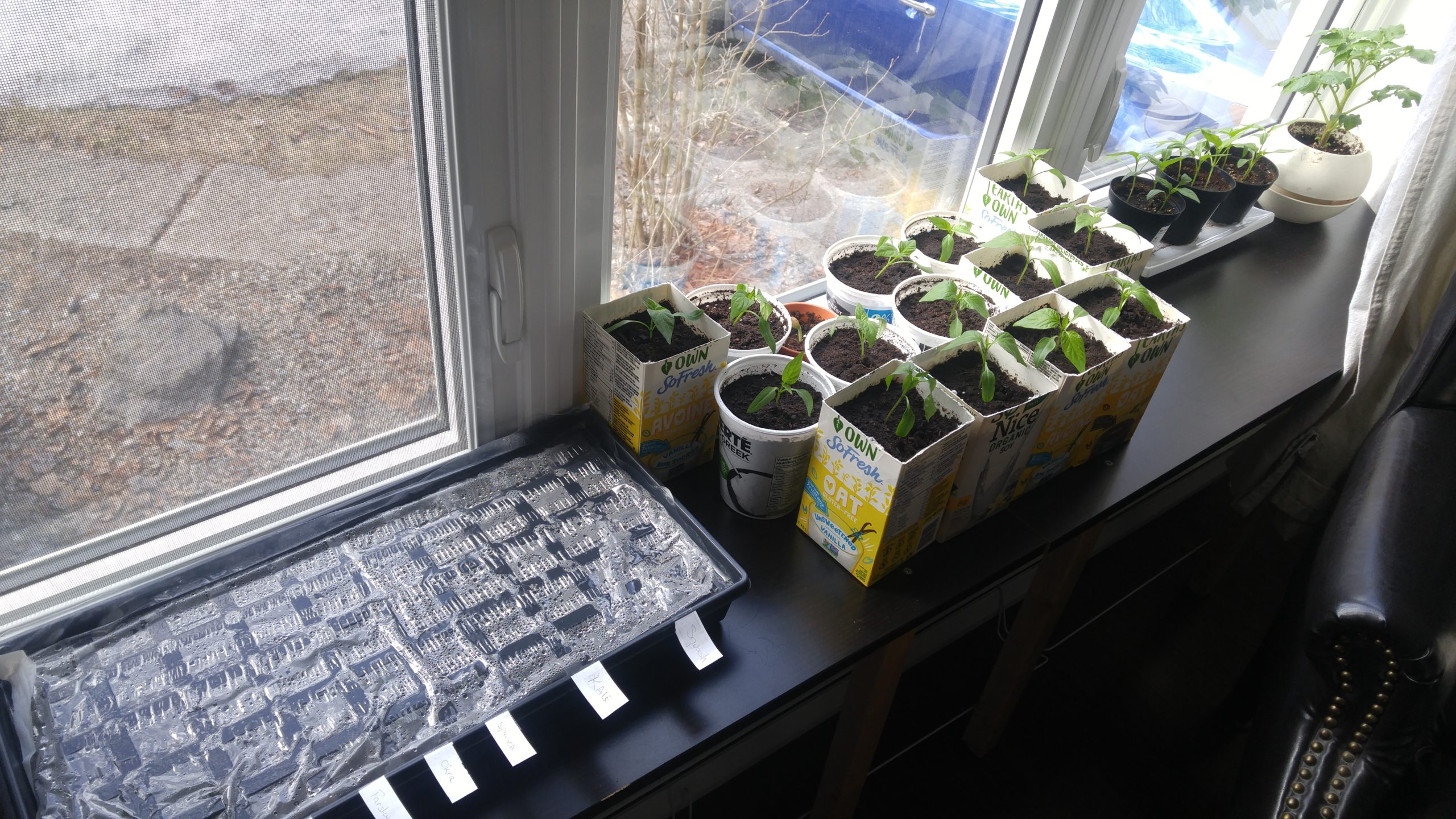To add diversity to my Windowsill Plants Experiment, I decided to repurpose some light fixtures and compact fluorescent lights to make a small grow space inside the house.
I had a variety of seeds already on hand, as well as different kinds of homemade pots, so the overall cost of this garden was almost nothing. I only bought some general purpose fertilizer for vegetables, which was probably around 15$.
The Installation
The space allocated for this garden was small. Everything needed to fit underneath an industrial metal clothes rack. Four lumber pieces of 2″ x 2″ (~30″ of length) were screwed together to form a square. Three 6-light strips were secured with tie wraps on the wooden structure and suspended with rope on the metal rack. I attached all the electrical wires to a single plug, since CFLs do not require much current. I used 18 CFLs of about 6W each, so altogether they draw less than 1 amp. The lights and a small fan were plugged in a timer outlet and were on for about 16-18 hours a day. I had pretty much everything already on hand, so it was an easy build. For example, the light strips and light bulbs came from my previous Basement Hydroponics project.
And that’s about it for the installation! It was pretty rudimentary, but effective.
The Plants
Since the windowsill was getting full, I decided to move some of the plants to this new space. Initially it consisted of a red pepper, a zucchini, one or two kale and a few swiss chards. The clothes rack turned out to be a very good idea, since as the plant grew, I could raise the top part along with them.

For a few months, I was able to collect mostly swiss chard and kale, along with a single small pepper. Surprisingly, the zucchini plant produced a sizable fruit, but I could tell from its darker color and the discoloration on the leaves that the plant was not happy inside. After harvesting the zucchini, I decided to remove the plant altogether. This also gave me a lot of space for more plants!

At some point, I decided to plant seeds that I never tried before: soybeans, snow peas, arugula, goji and a nasturtium flower (capucine in French). However, now that I think about it, maybe I should have made different choices. For example, nasturtium are known to attract aphids, which is not great given that I don’t want to use pesticides, and the rest of the garden is meant to be edible.

Before the winter, I collected seeds from a bolting bok choy that was sort of left unsupervised outside. Even thought I was not thorough enough to harvest it before that, at least the seeds would give me a second chance at eating bok choy, eventually. So with that added to the mix, my indoor garden was starting to look decent!

To be continued…



